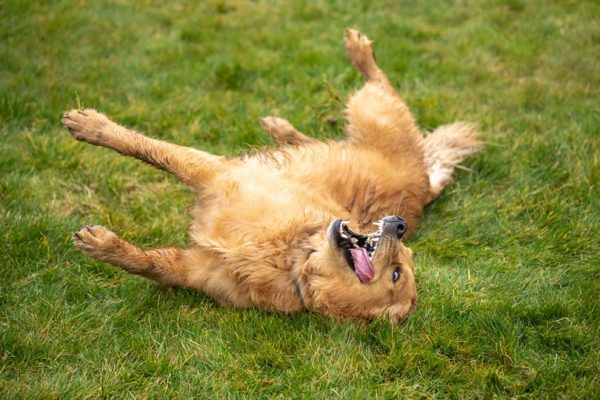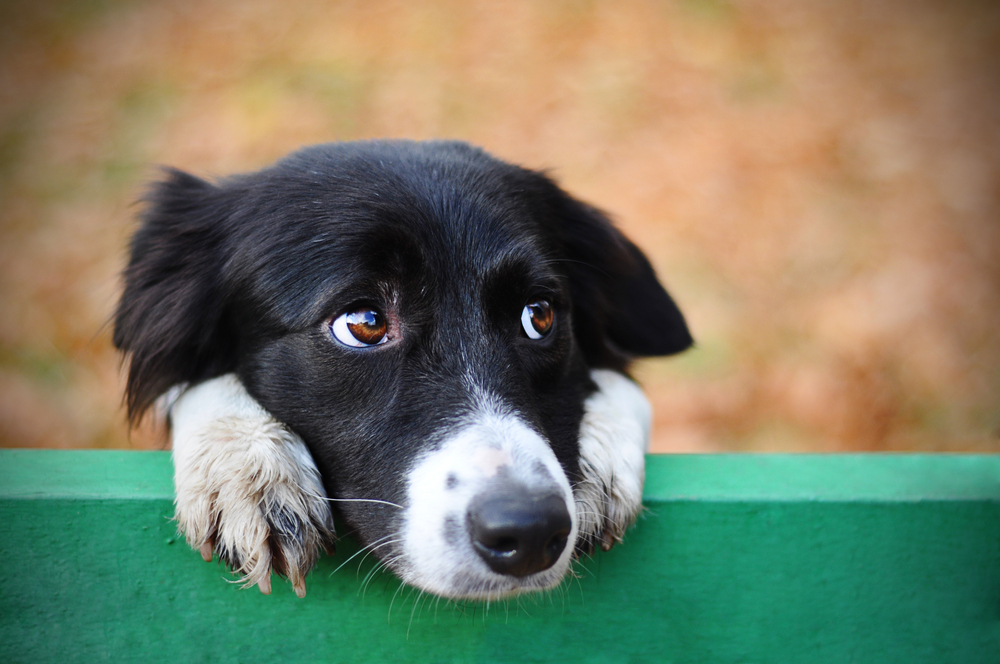The dog park can be a joyful place full of swooshing tails and happy yips for you and your furry friend, but unfortunately it can also be a dangerous place where misunderstanding between canine companions can quickly escalate into aggression and violence. It’s important to learn how to read a dog’s body language because fear can turn into aggression, especially if they feel trapped.
Conversely, it’s also a good idea to know if a seemingly threatening bark could actually be an enthusiastic call to play. Here are some ways to tell if the really cute newcomer at the dog park wants to be friends, or if you and your dog should leave them alone.
How to Tell If a Dog Wants to Play
Beyond the obvious wagging tail and gleeful barks, you can deduce that the new dog wants to play by these signs.
1. Taking a Bow
Rearing their bottoms in the air and laying on their front paws is a good sign that the dog is asking you or your dog to play with them, especially if their bottom is wriggling. The bow is a gesture that scientists believe indicates an invitation to play, similar to how dance partners bow and curtsy after a waltz.

2. Excited Barking or Exaggerated Snarling
Loud, frenzied barking is typically a sign of playfulness, although sometimes barking might be a sign of aggression. In these instances, it’s vital to take the rest of the dog’s body language into account. Are they wagging their tails or are they standing stiffly while snarling? Some dogs might appear aggressive when they actually want to play, but others may be telling your pup to back off.
3. Rolling Over
Flopping over on their backs, dogs roll over to ask the other dog to play. They’re giving your dog permission to tackle them. Some scientists believe this is an act of submission.

4. Making Silly Movements
Dogs might hop around with a puppy-like gait, tapping the other dog’s tail with their paws or bounding through the open field at the dog park. This dog can’t wait for you to let your puppy off-leash so they can romp together.
5. Smiling
If the dog’s lips are pulled back into a happy smile—not a snarl—then it’s also probably a good sign. Happy dogs often pant and smile when they’re excited.


Signs of Aggression
You want everyone to have a good time, humans and dogs included. Frankly, a potential dog fight is scary business to be avoided at all costs. Most times animal aggression can be prevented by being aware of body language and adjusting as necessary. Here are some signs of aggression that mean you might need to move on.
1. Lowered Tail
A drooping tail that isn’t wagging typically means the dog is scared. This behavior is often accompanied by bristled hairs on their back, and sometimes by their lips pulled back into a snarl. If these things happen, you and your dog are not safe. The new dog is obviously scared and is poised to bite if you come their way.
2. Stiff Body
Contrasting with a happy, floppy gait, a dog stiffly standing still or walking slowly while growling is definitely a sign to back off.

3. Dodgy Behavior
If the dog is shying away from you or your dog, then you should let them be. Never let your dog chase another dog who doesn’t want to engage because this could innocently challenge them into a fight.
4. Beware of Leash Aggression
Some dogs might act fearsome on a leash but be perfectly fine when released into a dog park. You should ask the owner if their dog is friendly, but don’t take their word as absolute truth, especially if they’re already showing obvious signs of aggression. Use your own discretion in these instances.
If you’re concerned about your dog’s behavior we suggest you speak to a vet.
If you need to speak with a vet but can’t get to one, head over to PangoVet. It’s an online service where you can talk to a vet online and get the personalized advice you need for your pet — all at an affordable price!
How to Meet a New Dog

When you meet a dog for the first time, the very first thing you should do is ask the owner if it’s okay to say hi. Never assume that it’s okay to pet someone’s dog because they might be working through behavioral issues or be a service dog in training.
If it’s okay with the dog’s parents, proceed with a calm, welcoming voice. Don’t rush into petting them all at once but hold out your hand in a fist a few inches away from the dog’s face for them to sniff. If the dog is interested in you, then your outstretched hand will pique their curiosity and they’ll get to “nose” you by reaching forward to catch your scent. You should offer your hand in a fist so that they can’t bite your fingers if something about you triggers them.
A friendly dog will typically start wagging their tail at this point and ask for pets by coming forward. If they shy away by backing up, raising the fur on their back, or lowering their tail without wagging, then you should back off. Never force yourself on a dog because a cornered dog might bite you out of fear.

Conclusion
It’s important to make sure everyone is having fun at the dog park to keep the environment enjoyable and lessen the risk of a terrifying dog fight. If you’re meeting a new dog for the first time, follow these tricks and tips to keep yourself and the new dog safe. The key to preventing hostility is to make sure everyone is comfortable, even if you have to leave the situation to prevent a fight. While you shouldn’t be fearful of meeting new animals, aggression can escalate quickly so it’s always better to be safe than sorry and leave if you feel like a fight is coming.
- See also: Why Does My Dog Bow to Me?
Featured Image Credit: VDB Photos, Shutterstock













